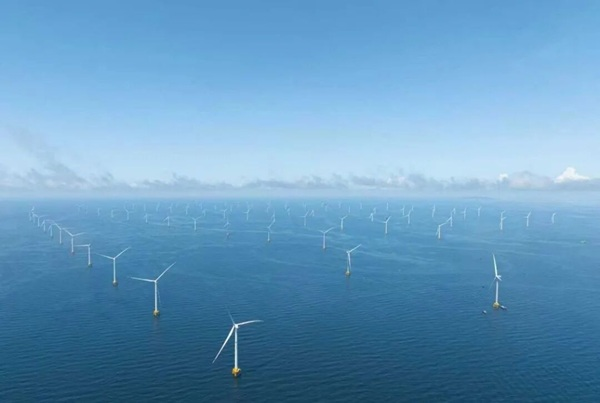Guangxi’s first offshore wind project, the Fangchenggang Offshore Wind Demonstration Project, has been operational for 598 days, marking a major step in the region’s green energy transition.
Developed by Guangxi Investment Group’s Guangxi Energy Group Co., Ltd., the project boasts a 700,000 kilowatts capacity and generates about 2.06 billion kWh annually, enough to power more than 2 million households. The project saves 620,000 tons of coal and reduces 1.64 million tons of carbon dioxide emissions each year.

Guangxi’s first offshore wind project, the Fangchenggang Offshore Wind Demonstration Project, has been operational for 598 days, marking a major step in the region’s green energy transition. [Photo/sasac.gov.cn]
Located in the Beibu Gulf, the project is also China’s first offshore wind farm built entirely on rock foundations. Engineers adopted an innovative three-legged jacket design to anchor turbines on the rocky seabed, enabling them to withstand typhoons of up to Category 15.
Despite complex geology, strong currents, and frequent typhoons, the construction team set multiple records, including completing a rock-embedded foundation in just 20 days and assembling a turbine in 40 hours. More than 10 technologies were applied for the first time in China.
The project also features advanced equipment such as lighter, more efficient blades, eco-friendly subsea cables, and an upgraded modular offshore substation that replaces the need for two or even three conventional substations. Intelligent inspection robots allow for unmanned operations and smart maintenance.
In September 2024, the wind farm withstood Typhoon Mokha (Category 17) without damage, proving the reliability of its design.
The Fangchenggang project provides a replicable model for offshore wind development in rocky seabed regions and paves the way for more “offshore wind forests” to rise in the Beibu Gulf.
(Executive editor: Yuan Ting)